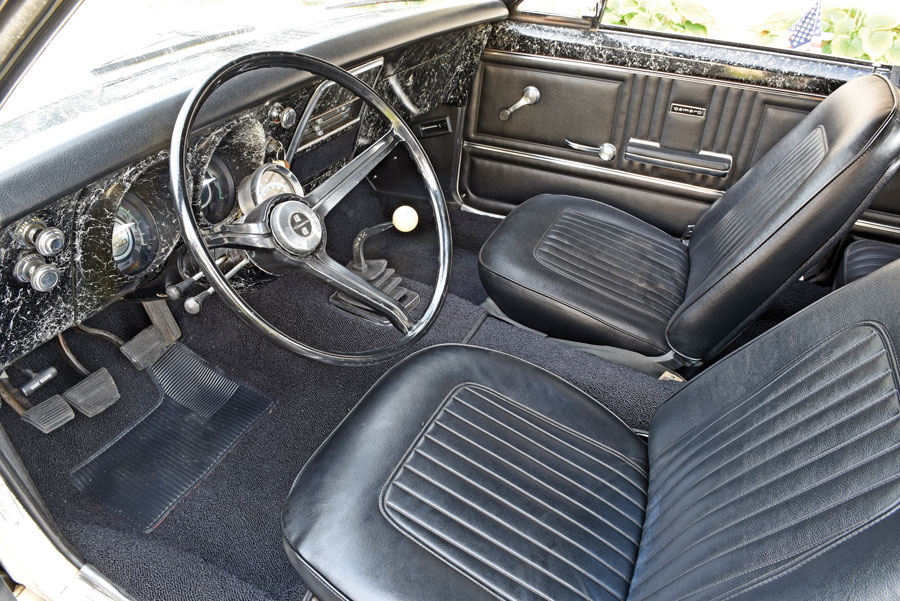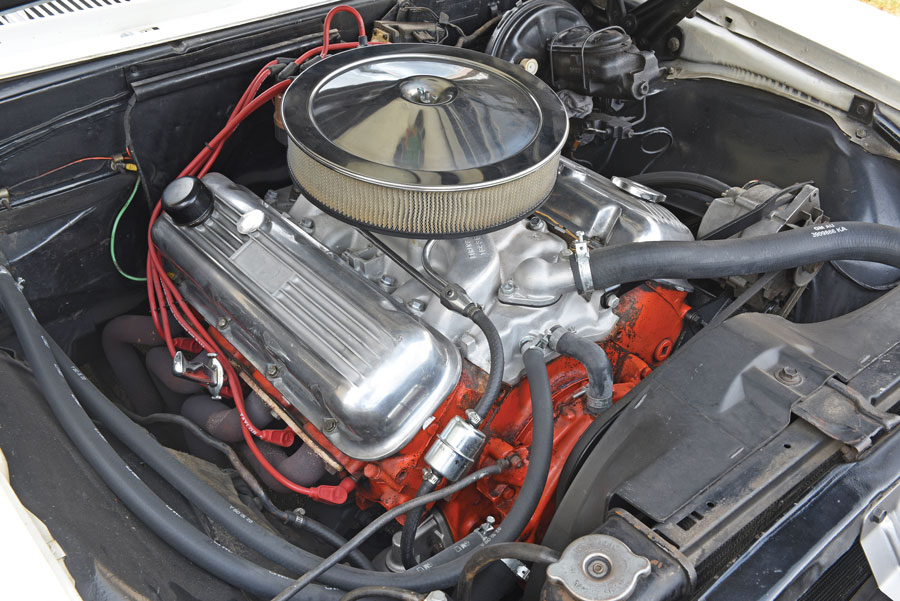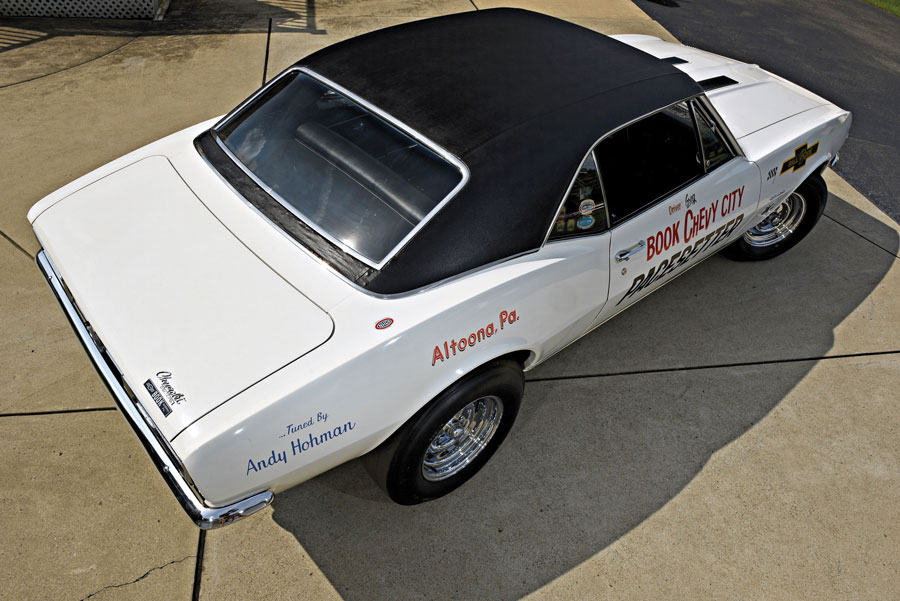 Feature
Feature Photography BY The Author
Photography BY The Authoro hard-core vintage muscle car freaks, the name Brian Henderson should pop a light bulb off in your Chevy-crazed cranium. Brian is a well-known muscle car historian and co-owner of Super Car Workshop (SCW) in Latrobe, Pennsylvania, a restoration shop that specializes in restoring big-money muscle rides from GM’s glory days of the late ’60s and early ’70s.
Working along with partner Joe Swezey, the twosome has kept up the search for Chevy’s big-powered rides of the first muscle car era, hunting down, verifying, and restoring those rare Bowties. To date, the twosome doesn’t have a precise count on how many Chevys they’ve recovered and restored, as the boys have run out of digits to count on. “All we can say is that we’ve been very prolific,” Brian quips.
A few years ago, Brian was gathering info on a Yenko Camaro they were restoring. “I was doing research on this particular F-body, which was an unusual X11-style trim Yenko. It was orange with white pinstripes. I found pictures of a Yenko that matched that description. It was in its drag race configuration and had the words ‘Forgy’s Funster’ on the door, along with an Altoona, Pennsylvania, speed shop decal,” Brian says. By luck, Brian met an Altoona hot rodder who knew of the car. Within days he had a meeting with the car’s original owner.
A man named Don Carnell put it together. “After the meeting, we went to dinner and [Carnell] asked if I would like to see his Dodge Dart and Camaro pace setter later in the evening. The answer was a simple ‘absolutely,’” Brian says. When they arrived, Brian knew right away that the car under the cover was not the convertible pace car he thought he going to have a look at. It turned out to be a 1967 Camaro L78 SS built with an M21 and a factory 12-bolt stuffed with 4.56 gears. It was a stripped car from the factory with no console or radio, skinned in Ermine White with the only RPO being the black vinyl roof.
It was still wearing its Bill Book Chevrolet Pacesetter lettering, which, along with the mostly original paint, was in amazing condition. With only 6,000 miles on the car, it was raced and cared for quite diligently—even the wheel lips had never been cut or rolled. “After learning more about the car, I found out that Book Chevy sponsored the L78 to run Super Stock in 1967-1968, running at local tracks in the area. Over the next few years, Book used many engine combinations in the car, including a 427 L72 and even a ZL1. After two seasons, the car was returned to the dealership,” Brian states.
Once finished with its racing career, a 378hp, 396ci CE block was put back into the Camaro. The other stock bolt-ons correct for the engine package were then added, bringing it back up to L78 specs. “The car was then advertised for sale in the Altoona Mirror newspaper as a used dragster. I have the original ad from the paper,” Brian says.
Being an avid collector, Brian wanted to grab the low-mileage Camaro for himself. “That day I asked if the car would ever be for sale and [Carnell] told me there was a long list of people wanting the car and I could take my place in line,” Brian says.
A week later, Brian invited both Carnell and Dick to SCW to check out the Yenko he and Swezey were in the process of restoring for owner Tony Lucas. The previous week Brian and Swezey had made some magnetic decals to show the owner how the car would look lettered up like it was when Dick raced it. This act brought the driver to tears, something that many people close to him said could never be done.
Years passed when Brian got the call he was hoping for. It was Carnell letting him know the Camaro was now up for sale. Brian was quite surprised knowing the Camaro had a long list of suitors ahead of him. “I asked him, ‘What about the list?’ He then told me that on the night at SCW and the reunion we had with Dick and his old Yenko, it made up his mind. Knowing I would keep the car in its race trim and preserve its history put me at the top of the list,” Brian happily reports.

Today, the Camaro is pretty much the way it was delivered new. “I contacted Greg Turchetta, the original driver of the L78. [Turchetta] had a picture of the car as new and has been a big help with the preservation of the car and has also become a good friend,” Brian says. He’s been a great help ensuring the Camaro is just the way he drove it back in the day.
As of now the car sits on 7:10 Stahl front tires on reverse chrome wheels and JC Penny vintage rear slicks. The wheels are topped with N.O.S. Cragar hubcaps, which were all the rage in 1967-1968. The original headers and traction bars are still present and in excellent condition. The interior is just the way it was raced: console delete along with the standard vinyl interior. The “cobweb” paint was something they did to spice up the basic black and is period correct in every respect.



This Camaro remains a time capsule of days when you could buy a potent muscle car at your local dealer and bring it right to the strip for immediate payback on your hard-earned cash. It’s a day-two car for all the right reasons; some cool racer add-ons, choice wheels and rubber, and some aesthetic touches that could be done in a weekend. As for the future of the Camaro, Brian puts it bluntly, “I have no plans to return it to stock, ever. It shows well and still has some battle scars here and there. Someday I may restore it to an extremely high level, but I would restore it exactly as it rolled into Bill Book Chevrolet and turned into a race car … on day two!”

Vehicle: 1967 Camaro
Type: Chevy big-block L78
Displacement: 396 ci
Compression Ratio: 11.1
Bore: 4.094 inches
Stroke: 4.126 inches
Cylinder Heads: Rectangular port, 2.19 intake, 1.72 exhaust
Rotating Assembly: Forged crank, forged dimple rods, domed forged pistons
Valvetrain: Stock
Camshaft: Mechanical flat tappet
Induction: Stock cast-aluminum high-rise intake, 4 bbl. Holley 780 cfm
Ignition: Stock
Exhaust: Headers, 3-inch, mild steel pipe
Output (at crank): 475 hp
Transmission: Muncie M21
Rear Axle: Chevy 12-bolt 4:56.1 QB code
Front Suspension: Stock
Rear Suspension: Track bars by ET
Brakes: Stock drum
Wheels: Chrome reverse 15×4 and 15×10
Tires: 7:10 Stahl front, JC Penny Slicks rear
Upholstery: Stock
Material: Vinyl
Seats: Stock
Steering: Stock
Shifter: Hurst
Dash: Stock
Instrumentation: Stock, Stewart-Warner tach
Audio: None